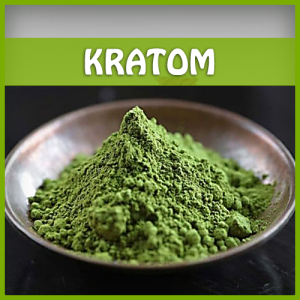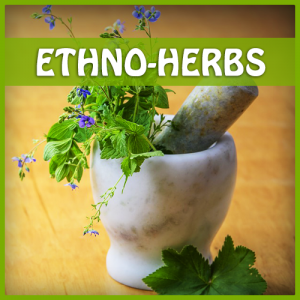Updates
Sassafras Root Bark: Properties and Benefits
Sassafras is a plant that is native to the eastern United States, and it is known for its unique and fragrant root bark. The root bark of the sassafras plant has been used for centuries by indigenous people for a variety of medicinal and culinary purposes. In this article, we will explore the properties and benefits of sassafras root bark, as well as its potential risks and side effects.
Properties of Sassafras Root Bark
Sassafras root bark is known for its unique flavor, which has been described as a combination of root beer and licorice. It is rich in essential oils, including safrole, which gives it its characteristic scent and taste. Sassafras root bark also contains a number of other compounds, including tannins, mucilage, and resin.
Benefits of Sassafras Root Bark
Sassafras root bark has a long history of use as a natural remedy for a variety of ailments. Here are some of the potential benefits of sassafras root bark:
* Digestive aid: Sassafras root bark has been traditionally used to treat indigestion, bloating, and other digestive issues. It is believed to have mild laxative properties and may help to stimulate digestion.
*Fever reducer: Sassafras root bark has been used as a natural fever reducer and may be effective in reducing the symptoms of fever, including chills and sweating.
* Diuretic: Sassafras root bark may help to increase urine production and promote the removal of excess fluid from the body. This makes it a potential natural remedy for conditions such as edema and high blood pressure.
* Pain reliever: Sassafras root bark has been used as a natural pain reliever and may be effective in reducing inflammation and swelling. It has been used to treat a variety of conditions, including muscle aches, headaches, and toothaches.
* Anti-inflammatory: Sassafras root bark has potent anti-inflammatory properties and may be effective in reducing inflammation in the body. It has been used to treat conditions such as arthritis and gout.
* Skin health: Sassafras root bark has been used topically to treat a variety of skin conditions, including acne, eczema, and dermatitis. It is believed to have antimicrobial and astringent properties, which may help to reduce inflammation and kill bacteria on the skin.
* Cancer prevention: Some research suggests that sassafras root bark may have anticancer properties. One study found that a compound found in sassafras root bark called 4-methyl-1,2-benzenediol (4-MBD) may inhibit the growth of certain types of cancer cells. However, more research is needed to confirm these findings.
Risks and Side Effects of Sassafras Root Bark
While sassafras root bark has a number of potential benefits, it is important to note that it may also carry some risks and side effects. Here are a few potential concerns to consider:
* Contamination: Sassafras root bark may be contaminated with chemicals, including safrole, which is a known carcinogen. Safrole is banned by the FDA in the United States and is considered to be a potential human carcinogen.
* Drug interactions: Sassafras root bark may interact with certain medications, including blood thinners and anticonvulsants. It is important to speak with a healthcare provider before taking sassafras root bark if you are taking any medications.
* Allergic reactions: Some people may experience allergic reactions to sassafras root bark. Symptoms of an allergic reaction may include rash, itching, swelling, and difficulty breathing. If you experience any of these symptoms after taking sassafras root bark, stop use and seek medical attention immediately.
* Pregnancy and breastfeeding: Sassafras root bark is not recommended for use during pregnancy or breastfeeding due to the potential risks associated with safrole. Safrole may cross the placenta and may be harmful to a developing fetus. It is not known if sassafras root bark is safe for use during breastfeeding, so it is best to avoid it.
* Children: Sassafras root bark is not recommended for use in children due to the potential risks associated with safrole.
Dosage and Preparation of Sassafras Root Bark
Sassafras root bark is available in a variety of forms, including dried bark, tea, and extract. Here are a few guidelines for using sassafras root bark:
* Dried bark: Dried sassafras root bark can be used to make tea or added to dishes as a flavor enhancer. To make tea, add one to two teaspoons of dried sassafras root bark to one cup of boiling water. Steep for 10-15 minutes and strain before drinking.
* Tea: Sassafras root bark tea is available in tea bags or as a loose leaf tea. Follow the instructions on the package for brewing.
* Extract: Sassafras root bark extract is available as a liquid or in capsule form. Follow the instructions on the package for dosage and use.
It is important to note that the safrole content of sassafras root bark varies widely depending on the source and the method of preparation. To reduce the risk of contamination, it is best to purchase sassafras root bark from a reputable supplier.
Conclusion
Sassafras root bark has a long history of use as a natural remedy for a variety of ailments. It is known for its unique flavor and has been used for digestive issues, fever reduction, diuretic effects, pain relief, anti-inflammatory effects, and skin health. However, sassafras root bark may also carry some risks and side effects, including contamination with safrole, drug interactions, allergic reactions, and potential harm to a developing fetus or breastfeeding infant. It is important to speak with a healthcare provider before taking sassafras root bark and to purchase it from a reputable supplier.

























